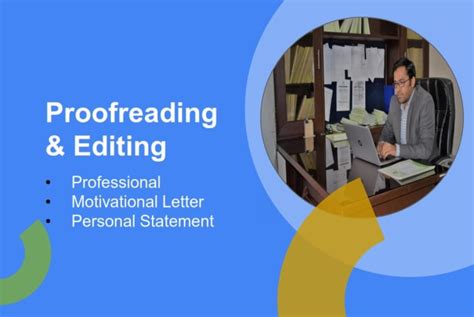When it comes to expressing your ideas and connecting with readers, the power of skillful composition cannot be underestimated.
Communicating effectively through the written word requires a delicate balance of precision and creativity. It involves more than simply putting pen to paper or typing away on a keyboard; it requires a thoughtful approach to engage and captivate your audience.
Developing a proficiency in crafting persuasive content can take time and practice. However, armed with practical strategies and a solid understanding of key principles, you can elevate your writing to new heights and leave a lasting impact on your readers.
Within these virtual pages, we will uncover invaluable insights and techniques that can turn your compositions from ordinary to extraordinary. Prepare to delve into the art of creating well-crafted prose that demands attention and provokes thought.
Discover the secrets to composing compelling narratives that resonate with emotion and authenticity.
Unleash the power of words to establish your unique voice, foster connections, and leave a lasting impact on your readers.
Understanding Your Target Audience

Getting to know your intended readers is the key to creating compelling and engaging content. By understanding the demographic, interests, and needs of your target audience, you can tailor your writing to effectively communicate with them.
- Identify your target audience: Determine who your content is intended for. Consider factors such as age, gender, interests, and occupation.
- Analyze their needs: Conduct thorough research to understand what your target audience is looking for. Identify their pain points, challenges, and desires.
- Create personas: Develop fictional characters that represent your target audience. Give them names, backgrounds, and characteristics to better understand their motivations and behavior patterns.
- Use language they can relate to: Speak the language of your target audience. Avoid jargon and complex terminology that may alienate or confuse them.
- Address their concerns: Anticipate the questions and concerns of your target audience and address them in your content. Provide valuable solutions and offer insights that resonate with their needs.
- Personalize your content: Tailor your writing to make it relatable to your target audience. Use storytelling techniques, examples, and anecdotes that reflect their experiences.
- Stay updated: Keep up with the latest trends, news, and developments that are relevant to your target audience. This will help you stay informed and ensure your content remains fresh and engaging.
- Engage with your audience: Encourage feedback and interaction from your readers. Respond to their comments, address their queries, and show that you value their input.
- Continuously learn and adapt: Regularly review and analyze the response to your content. Adjust your writing style and topics based on the feedback received to better engage and resonate with your target audience.
Understanding your target audience is an ongoing process that requires research, empathy, and adaptability. By gaining a deep understanding of who you are writing for, you can effectively tailor your content to meet their needs and create a meaningful connection.
Set Clear Goals for Your Content
When it comes to creating content that truly resonates with your audience, having a clear set of objectives is vital. By defining your goals, you will give your content a purpose and ensure that it delivers the desired results.
To start, it's essential to understand the purpose of your content. Are you aiming to educate, entertain, or persuade your readers? By clarifying this objective, you can tailor your content to meet their needs and expectations.
- Identify your target audience and their specific needs. Consider their demographics, interests, and pain points when defining your objectives.
- Define the key messages you want to convey through your content. This will help guide your writing and ensure that your message is clear and impactful.
- Set measurable goals for your content, such as increasing website traffic, generating leads, or boosting brand awareness. These objectives will provide you with a benchmark to assess the effectiveness of your content.
- Consider the desired outcomes of your content. Do you want to drive conversions, encourage social sharing, or establish thought leadership? Clearly defining these outcomes will help you focus your efforts and refine your content strategy.
Remember, setting clear objectives for your content is the foundation for creating compelling and effective written material. By understanding your audience, defining your key messages, and setting measurable goals, you can create content that engages your readers and drives meaningful results.
Researching and Gathering Trustworthy Information

Ensuring the credibility and reliability of the information you incorporate into your content is an essential aspect of effective writing. By conducting thorough research and collecting dependable data, you can enhance the quality and authenticity of your work.
One of the key steps in producing exceptional content is to delve into extensive research. Thoroughly investigating your topic allows you to gain comprehensive knowledge and understanding of the subject matter. By exploring various credible sources such as reputable websites, academic journals, and expert opinions, you can gather a wealth of reliable information.
When conducting research, it is crucial to critically evaluate the credibility of the sources you encounter. Verify that the authors are experts in the field and that the information provided is supported by evidence and research. Cross-referencing multiple sources is also beneficial in ensuring accuracy and minimizing the risk of relying on biased or misleading information. Remember, relying on reputable and trustworthy sources serves as the foundation for producing compelling and reliable content.
In addition to relying on external sources, interviewing subject matter experts can provide valuable insights and unique perspectives. Conducting interviews enables you to gather first-hand information and tap into the expertise of individuals who possess in-depth knowledge and experience in your chosen topic. These interviews can serve as valuable resources that enhance the credibility and originality of your content.
Alongside conducting research and interviews, data collection and analysis are crucial components of producing effective content. Using reliable data and statistics to support your points adds credibility to your work. Ensure that you gather data from reputable sources, such as government reports, academic studies, or industry surveys. Analyzing the data and presenting it in a clear and concise manner strengthens the persuasiveness of your content.
In summary, the process of researching and gathering reliable information is paramount when striving to write influential content. Relying on reputable sources, critically evaluating information, conducting interviews, and incorporating reliable data all contribute to the overall quality and effectiveness of your writing.
Craft Engaging Titles that Demand Attention
When it comes to grabbing the reader's attention, crafting captivating and compelling headlines is crucial. A well-written title has the power to entice readers, pique their curiosity, and make them eager to delve into your content. In this section, we will explore some effective techniques and strategies for creating attention-grabbing headlines that leave a lasting impression.
1. Utilize Powerful Words and Phrases
- Choose strong and descriptive words that evoke emotion.
- Incorporate action verbs to convey a sense of urgency or excitement.
- Consider using numbers, as they tend to attract attention and make the content more tangible.
2. Appeal to the Reader's Needs and Interests
- Identify your target audience and understand their motivations and desires.
- Create headlines that address their pain points or offer solutions to their problems.
- Show how your content can benefit or add value to their lives.
3. Be Clear and Concise
- Avoid vague or ambiguous headlines that leave the reader unsure of what to expect.
- Keep your titles concise while still conveying the main idea of your content.
- Avoid using jargon or complex language that may intimidate or confuse readers.
4. Use Intriguing Questions or Statements
- Pose thought-provoking or intriguing questions that make readers curious for answers.
- Create statements that challenge common beliefs or offer unexpected insights.
- Provide a glimpse of what readers will learn or discover by engaging with your content.
5. Test and Refine Your Headlines
- Experiment with different headline variations to see which ones resonate best with your audience.
- Pay attention to analytics and feedback to understand what headlines generate the most clicks or engagement.
- Continuously refine and optimize your headlines based on data and audience preferences.
By implementing these strategies, you can create attention-grabbing headlines that compel readers to click, read, and engage with your content. Remember, the title serves as the gateway to your content, so make it irresistible!
Engage Your Audience with Conversational and Compelling Language

Intriguing and captivating your readers is crucial when it comes to writing effective content. By employing engaging and conversational language, you create a connection with your audience that keeps them glued to your words, wanting to read more.
Instead of using rigid and formal language, try adopting a more relaxed and natural tone, as if you were having a conversation with a friend. This approach allows your readers to feel at ease and encourages them to continue reading, as they can relate to the content on a personal level.
Additionally, injecting enthusiasm and passion into your writing helps to maintain the interest of your audience throughout the entire piece. By using expressive and vivid language, you can evoke emotions and stir curiosity, making your content enjoyable and memorable for your readers.
Remember to structure your content in a way that mirrors a conversation. Break it down into digestible paragraphs and use subheadings to guide your readers through different topics. Utilize rhetorical questions, anecdotes, or storytelling techniques to keep your readers engaged and participative.
Overall, the key to using engaging and conversational language is to imagine yourself speaking directly to your audience, aiming to captivate and establish a connection that makes your content stand out. So, embrace a natural and personable writing style to deliver content that leaves a lasting impact on your readers.
Enhance Your Content with Subheadings
In today's digital age, it is crucial to captivate your audience and keep them engaged while reading your content. To ensure that your writing is effective and easy to consume, utilizing subheadings can greatly enhance the readability and organization of your content.
Subheadings provide a clear structure to your article, allowing readers to quickly scan and understand the main points without having to read through the entire piece. By breaking up your content into smaller sections with descriptive subheadings, you create a visual hierarchy that guides readers through your ideas.
When creating subheadings, it is important to choose concise and informative phrases that accurately represent the content within each section. Use relevant keywords that reflect the main ideas or arguments you want to convey. This not only helps readers quickly grasp the key points but also assists in search engine optimization (SEO).
Moreover, subheadings serve as signposts that highlight the different sections of your article, making it easier for readers to navigate and find the information they are specifically interested in. This is particularly helpful for skimmers or those who prefer to skim through a post before deciding to delve deeper into the details.
In addition to improving readability, subheadings break up your content into manageable chunks, making it less overwhelming for readers. Long pieces of text without any breaks can be daunting and discourage readers from engaging with your content. Subheadings act as visual breaks, offering readers moments to pause and absorb the information they have just read.
Lastly, incorporating subheadings in your content allows you to highlight important or impactful statements, creating emphasis and drawing attention to key concepts. By using formatting techniques, such as bold or italic fonts, you can create visual contrast between your subheadings and the surrounding text, further enhancing the overall readability and aesthetic appeal of your content.
| Benefits of Using Subheadings: |
| - Enhances readability and organization |
| - Facilitates quick and efficient scanning |
| - Improves navigation and user experience |
| - Makes content less overwhelming |
| - Highlights important statements and concepts |
Edit and Polish Your Content with Precision

Refine your written work to perfection through thorough editing and meticulous proofreading. The process of carefully reviewing your content ensures clarity, coherence, and accuracy, elevating the overall quality of your writing. By employing attention to detail and utilizing effective editing techniques, you can enhance your message, captivate your readers, and establish credibility. Follow these fundamental steps to shape your content into a masterpiece.
Begin by revisiting your initial draft, taking note of any inconsistencies, grammatical errors, or unclear statements. Pay special attention to sentence structure, ensuring that your ideas flow logically and cohesively. Eliminate unnecessary repetition and rephrase sentences to enhance readability and engagement. Consider the tone and style of your writing, making adjustments as necessary to maintain consistency and connect with your target audience effectively.
Take a comprehensive approach to proofreading, meticulously reviewing your content for spelling mistakes, punctuation errors, and typographical blunders. Even the smallest oversight can negatively impact the reader's perception of your work, so make sure to double-check every word and punctuation mark. Reading your content aloud can help identify awkward phrasing and grammatical shortcomings, providing valuable insights into areas that require improvement.
Consider seeking a fresh perspective by asking someone else to review your content. An impartial third-party can offer valuable feedback, identifying areas where your writing may be unclear or confusing. Take note of their suggestions and consider implementing necessary changes to enhance clarity and effectiveness. Embrace constructive criticism as an opportunity for growth and refinement.
Editing and proofreading are essential elements of the writing process that should never be rushed or overlooked. Allocate adequate time and attention to this critical stage, as it serves as the final checkpoint before publishing or sharing your work. By dedicating yourself to meticulous editing and proofreading, you can ensure that your content delivers its intended message with precision and impact, leaving a lasting impression on your readers.
FAQ
What are some tips for writing effective content?
Some tips for writing effective content include understanding your audience, creating a catchy headline, organizing your ideas, using clear and concise language, incorporating visuals, and proofreading your work before publishing.
How can I understand my audience better when writing content?
To understand your audience better when writing content, you can conduct market research, create buyer personas, analyze your website and social media analytics, interact with your audience through comments and feedback, and stay up-to-date with industry trends.
Why is creating a catchy headline important for writing effective content?
Creating a catchy headline is important for writing effective content because it grabs the attention of readers and entices them to click and read your article or blog post. A compelling headline should be concise, intriguing, and highlight the main benefit or key point of your content.
What are the benefits of using visuals in content writing?
Using visuals in content writing can enhance the overall quality of your content in several ways. Visuals such as images, infographics, and videos can help break up the text, make information easier to understand, increase engagement, and improve the overall user experience. They also have the potential to improve your search engine optimization (SEO) efforts by increasing the time users spend on your page.



